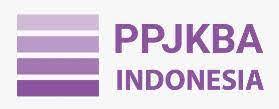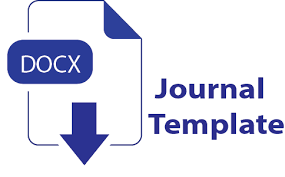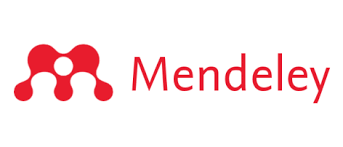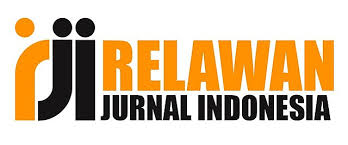Fa’aliyyatu Namudzaj Flipped Classroom ‘Ala Tahsini Maharati Al-Qiraah Fi Al-Madrasah Al-Tsanawiyah Al-Hukumiyah
DOI:
https://doi.org/10.58223/al-irfan.v8i1.341Keywords:
Learning Model, Flipped Classroom, Reading SkillsAbstract
n the process of teaching the Arabic language, including reading skills, there are still many students who struggle with learning it. Teachers also do not use methods that could facilitate students' understanding of the material presented. This study aims to analyze the effectiveness of the Flipped Classroom learning model in improving reading skills (maharah Qira'ah) in class X students at Madrasah Aliyah Negeri Sukoharjo. This research is a quantitative research using pre-experimental method with one-group pretest-posttest design, involving 30 students as samples. The research instruments were pretest and posttest tests to evaluate students' reading skills before and after the intervention. It was prepared based on the curriculum of Madrasah Aliyah Negeri Sukoharjo. The results showed a significant increase in posttest scores (82.00) compared to the pretest (54.33), with a statistical significance value of only 0.001. This increase shows the effectiveness of the Flipped Classroom model in improving students' reading skills. This model is considered effective because it has achieved the expected learning objectives, namely an increase in learning outcomes as evidenced by the results of posttest scores.
References
Azizah, L. (2024). Analysis Of The Effectiveness Of The Implementation Of Fipped Classroom Learning Model In Science Learning At School. Journal of Learning and Technology in Physics, 2(1), 25. https://doi.org/10.24114/jltp.v2i1.56671
Bastian, A. F., Munir, M. M., & Kouyate, S. (2024). تحليل صعوبة تعلم اللغة العربية للطلاب الجامعي في كلية التربية بجامعة الاسلامية “علووية” بمجوكرتو. Al-Fakkaar, 5(2), 71–84. https://doi.org/10.52166/alf.v5i2.7029
Chima Abimbola Eden, Onyebuchi Nneamaka Chisom, & Idowu Sulaimon Adeniyi. (2024). Harnessing technology integration in education: Strategies for enhancing learning outcomes and equity. World Journal of Advanced Engineering Technology and Sciences, 11(2), 001–008. https://doi.org/10.30574/wjaets.2024.11.2.0071
Department of Education Technology, State University of Malang, Indonesia, Fayanto, S., Kuswandi, Mahidol University, Thailand, La Thang, Erniwati, Ali, H. M., & Department of Physics Education, Halu Oleo University, Indonesia. (2023). Introduction and Testing about Development the Technology-Based EIGEC Models to Enhance Student Learning Outcomes. Science Education International, 34(4), 347–355. https://doi.org/10.33828/sei.v34.i4.10
Devi, Dr. Y. V. S., & Metla, Dr. S. (2025). Digital Crossroads: Integrating Humanities, Science and Technology Edition 1. BP International. https://doi.org/10.9734/bpi/mono/978-93-48859-10-5
Doctoral Student at State University of Gorontalo and Lecturer at the Faculty of Tarbiyah and Teacher Training, State Islamic University of Sultan Amai Gorontalo, Indonesia, Lamatenggo, N., Umar, M. K., & Lecturer at State University of Gorontalo, Indonesia. (2023). Learning Models: A Literature Review. International Journal of Social Science and Human Research, 06(05). https://doi.org/10.47191/ijsshr/v6-i5-31
Ejjami, R. (2024). The Adaptive Personalization Theory of Learning: Revolutionizing Education with AI. Journal of Next-Generation Research 5.0. https://doi.org/10.70792/jngr5.0.v1i1.8
Fascia, M. (2024). Technological Evolution And Sociental Shifts. https://doi.org/10.35542/osf.io/dw9mq
Heredia-Arboleda, E. E., Figueroa, M. N. C., Moreno, M. I. U., & Cevallos, A. A. C. (2024). The Flipped Classroom to Improve the EFL Listening Skill. Theory and Practice in Language Studies, 14(7), 1960–1970. https://doi.org/10.17507/tpls.1407.02
Indah Sari, P., & Azmi, U. (2023). Pengembangan Model Pembelajaran Savi dalam Meningkatkan Hasil Belajar Siswa Melalui Domain Psikomotorik Siswa di SMAN 9 Kota Jambi. Jurnal Ilmiah Dikdaya, 13(1), 271. https://doi.org/10.33087/dikdaya.v13i1.426
Karuru, P., Sipahelut, J., Riyanti, R., Saleh, M., & Makulua, K. (2024). Development of Technology-Based Learning Models to Enhance Critical Thinking Skills in Education Students. Global International Journal of Innovative Research, 2(1), 330–335. https://doi.org/10.59613/global.v2i1.53
Khaerani, K., Syamsuriyawati, S., & Rahmawati, R. (2024). Efektivitas Penggunaan Bintang Ajaib Sebagai Alat Peraga Dalam Pemahaman Konsep Barisan Aritmatika Siswa kelas VII SMP YP PGRI 4 Makassar. EQUALS: Jurnal Ilmiah Pendidikan Matematika, 7(1), 55–62. https://doi.org/10.46918/equals.v7i1.2220
Klimenko, A. Y. (2024). Journal of Educational & Psychological Research.
Laswadi, L., Setiawan, M. E., Efyanti, Y., Pentang, J. T., & Taresh, S. M. (2023). Distance Learning Design: A Problem-Based Learning with Flipped Classroom Model through improving student learning outcomes and learning motivation. Jurnal Inovasi Pendidikan IPA, 9(2), 216–226. https://doi.org/10.21831/jipi.v9i2.63166
Lubis, I., Ghoziyah, I., & Casmini, C. (2023). Assesmen For Learning Maharah Qira’ah Ditinjau Dari Tujuan Pembelajarannya. Educatif : Jurnal Ilmu Pendidikan, 5(2), 815–823. https://doi.org/10.31004/edukatif.v5i2.4189
Munawarah, R., & Ilmiani, A. M. (2024). Factors of difficulties in learning the Arabic language for students. Journal Of Foreign Language Learning and Teaching, 4(1), 55–63. https://doi.org/10.23971/jfllt.v4i1.8810
Nazarieh, M., Delzendeh, M., & Beigzadeh, A. (2024). Flipped learning in medical education: Enhancing engagement through innovative pedagogy. Research and Development in Medical Education, 13, 20. https://doi.org/10.34172/rdme.33258
Osituyo, O., Malagila, J. K., & Sha’ven, W. B. (2024). Partial Flipped Classroom Approach and Student Engagement in the Classroom: Evidence from a UK University. Journal of Education, Innovation and Communication, 6(1), 58–97. https://doi.org/10.34097/jeicom-6-1-5
Paristiowati, M., Dianhar, H., Hasibuan, N. A. P., & Fitriani, R. (2024). Integration of Various Digital Media with Flipped Classroom Models in Chemistry Learning: An Analysis of Student Activities. Orbital: Jurnal Pendidikan Kimia, 8(1), 104–118. https://doi.org/10.19109/ojpk.v8i1.21928
Pow-Sang, J. A., & Blumen, S. (2024). Factors Influencing Faculty Use of Active Learning Strategies in Engineering and Computing: A Study in a Peruvian University. 2024 IEEE Global Engineering Education Conference (EDUCON), 1–7. https://doi.org/10.1109/educon60312.2024.10578818
Rathomi, A. (2019). Pembelajaran Bahasa Arab Maharah Qira'ah Melalui Pendekatan Saintifik. Ta’dib: Jurnal Pendidikan Islam, 8(1), 558–565. https://doi.org/10.29313/tjpi.v8i1.4315
Rivera, M. D., & Flores, G. M. (2024). Flipped classroom approach for enhancing linguistic competence. International Journal of Evaluation and Research in Education (IJERE), 13(5), 3369. https://doi.org/10.11591/ijere.v13i5.27365
Samir, A. H., Ignatius, A. H., Samson, D. D., & Briskilla, M. (2024). Unveiling the crucial importance of 21st century teaching and learning methodology in Malawi. I-Manager’s Journal on School Educational Technology, 19(4), 30. https://doi.org/10.26634/jsch.19.4.20460
Sarah, S., Rizqia, A. S., Lisna, L., & Ali, M. (2024). Technology Integration in Arabic Language Skills Development in the Digital Era. Al-Fusha : Arabic Language Education Journal, 6(2), 74–81. https://doi.org/10.62097/alfusha.v6i2.1735
Saroinsong, D. M., Dengah, J. I., & Rondonuwu, A. T. (2024). Participatory Learning Method: Effectiveness in Improving Student Learning Outcomes. Edumaspul: Jurnal Pendidikan, 8(1), 66–75. https://doi.org/10.33487/edumaspul.v8i1.7561
Septin Puji Astuti. (2020). Statistika/ Septin Puji Astuti. Gerbang Media Aksara.
Sharma, R., & Singh, A. (2023). Use of Digital Technology in Improving Quality Education: A Global Perspectives and Trends. Dalam V. Nadda, P. K. Tyagi, R. Moniz Vieira, & P. Tyagi (Ed.), Advances in Logistics, Operations, and Management Science (hlm. 14–26). IGI Global. https://doi.org/10.4018/979-8-3693-2065-5.ch002
Siti Nur Khasanah, Nurrokhmatulloh, Hasan Syaiful Rizal, & Amirul Mukminin. (2024). Pengaruh Strategi KWL Berbantu Sorogan Terhadap Keretampilan Maharah Qira'ah Santri Usia Dini. Lahjah Arabiyah: Jurnal Bahasa Arab dan Pendidikan Bahasa Arab, 5(2), 229–240. https://doi.org/10.35316/lahjah.v5i2.229-240
Sugiyono. (2009). Metode Penelitian Kuantitatif, Kualitatif/ Prof. Dr.Sugiyono , R&D. Bandung: Alfabeta, cv.
Suharsono, S., & Zakawali, M. A. (2022). Analisis Materi Nahwu dalam Kitab Audlohul Manahij Fi Mu'jam Qowa'idul Lughoh Al 'Arabiyah. Lahjah Arabiyah: Jurnal Bahasa Arab dan Pendidikan Bahasa Arab, 3(1), 71–78. https://doi.org/10.35316/lahjah.v3i1.71-78
Wang, G., & Wang, M. (2024). Research on the Impact of Flipped Classroom Teaching Mode on College Students’ Learning Motivation. Scientific Journal Of Humanities and Social Sciences, 6(11), 177–186. https://doi.org/10.54691/sqkp7989
Zhao, J., & Bin Zainol Abidin, M. J. (2024). Innovative Approaches in Teaching Reading: The Flipped Classroom Model for EFL Students in China. Journal of Digitainability, Realism & Mastery (DREAM), 3(07), 1–15. https://doi.org/10.56982/dream.v3i07.245
Downloads
Published
How to Cite
Issue
Section
License
Copyright (c) 2025 Syarifah Jinan, Muhammad Zaenuri, Sukirman, Muhammad Nur Kholis

This work is licensed under a Creative Commons Attribution 4.0 International License.
Lisensi :
Al-Irfan: Journal of Arabic Literature and Islamic Studies is published under conditions Creative Commons Attribution 4.0 International License / CC BY 4.0 This license permits anyone to copy and redistribute this material in any form or format, modify, modify, and make derivative works of this material for any purpose, including commercial purposes, so long as they credit the author for the original work.











